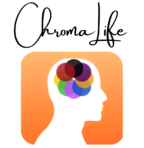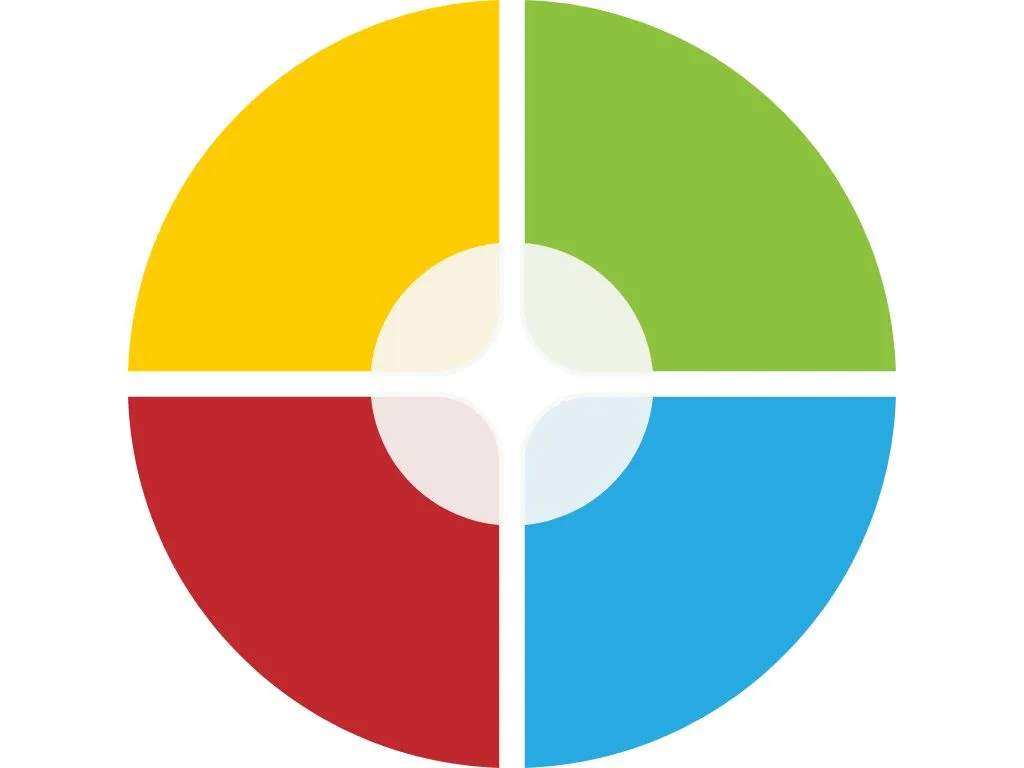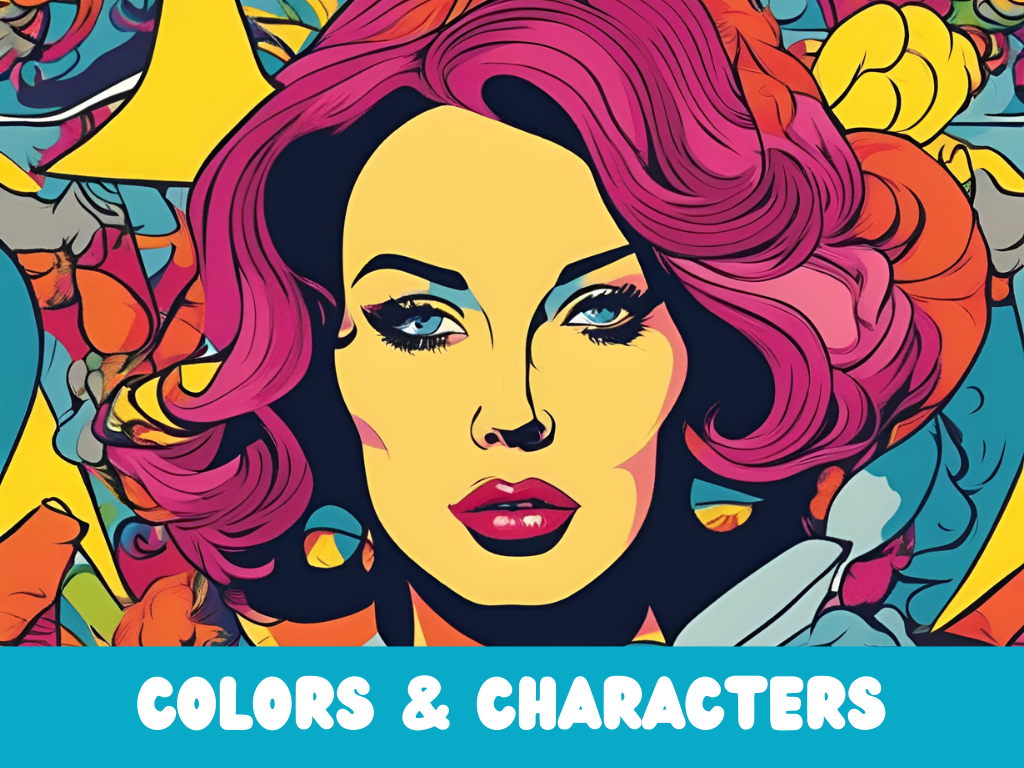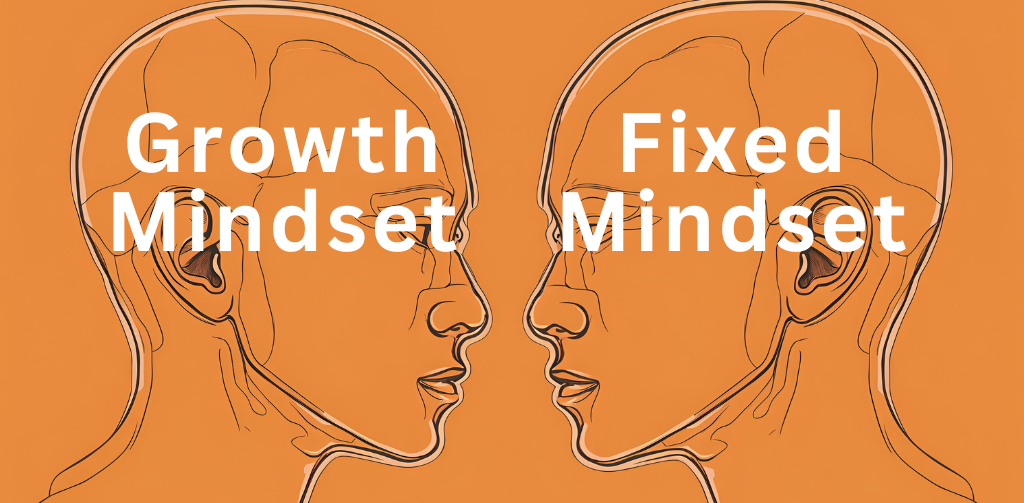[read-time]

In this article we examine both The HEXACO personality test (model) and the Personality Color Assessment and discuss how they can be successfully integrated. We’ll explore practical applications of combining these two approaches to understand personality better.
Understanding Color Assessment and Its Popularity
Personality color assessments categorize people based on their preferred colors, attributing specific traits to each:
Blue: Represents calmness, stability, and reliability.
Green: Associated with peace, healing, and persistence.
Red: Denotes energy, passion, and action.
Orange: Symbolizes adventure, enthusiasm, and sociability.
Yellow: Reflects optimism, creativity, and extroversion.
The HEXACO Model: A Quick Overview
Origins and Development
The HEXACO model was developed by Kibeom Lee and Michael Ashton. It stands out because it adds a sixth trait to the traditional five-factor model: Honesty-Humility. This model has been refined over the years and is now widely used in personality research.
Key Personality Traits in HEXACO
The HEXACO model includes six main traits:
- Honesty-Humility: High scorers avoid manipulating others for personal gain and feel little temptation to break rules.
- Emotionality: High scorers experience fear of physical dangers and need emotional support from others.
- eXtraversion: High scorers feel confident in social settings and enjoy social gatherings.
- Agreeableness: High scorers are forgiving and gentle with others.
- Conscientiousness: High scorers are organized and diligent.
- Openness to Experience: High scorers are curious and open to new ideas.
Here’s a quick comparison of the six traits in the HEXACO model:
| Trait | Description |
| Honesty-Humility | Avoids manipulation, low temptation to break rules |
| Emotionality | Experiences fear, needs emotional support |
| eXtraversion | Confident in social settings, enjoys gatherings |
| Agreeableness | Forgiving, gentle |
| Conscientiousness | Organized, diligent |
| Openness to Experience | Curious, open to new ideas |
Integrating The Personality Color Assessment with HEXACO Personality Test
Red Personality and HEXACO’s Extraversion
Red personalities in color assessment systems are often associated with energy, assertiveness, and confidence. These traits align closely with the Extraversion factor in the HEXACO model.
Individuals with red personality traits may score high on the Extraversion scale of HEXACO, particularly in facets like Social Boldness and Sociability. This correlation can be leveraged in various professional settings.
For instance, in sales and marketing roles, red personalities can utilize their natural extraversion to engage clients effectively and lead dynamic presentations.
In team-building exercises, pairing red personalities with more introverted team members can create balanced groups, fostering an environment where bold ideas are proposed and refined through diverse perspectives.
Leadership development programs can also benefit from this understanding, tailoring training to help red personalities harness their extraversion while developing skills in active listening and empathy to become more well-rounded leaders.
Blue Personality and HEXACO’s Conscientiousness
Blue personalities, typically characterized by their analytical, organized, and detail-oriented nature, show strong connections to the Conscientiousness factor in the HEXACO model. This alignment has significant implications in workplace settings.
Blue personalities often excel in roles requiring high levels of organization, diligence, and perfectionism – all key aspects of Conscientiousness in HEXACO.
This understanding can guide job placement and team formation. For example, blue personalities might thrive in project management roles, where their natural inclination towards organization and attention to detail aligns with the demands of the job.
In quality assurance departments, blue personalities can leverage their conscientiousness to maintain high standards and implement meticulous checking procedures.
Furthermore, in personal development contexts, recognizing this connection can help blue personalities understand their strengths in self-discipline and organization, while also identifying areas for growth, such as flexibility and spontaneity, which might be less natural for them.
Green Personality and HEXACO’s Agreeableness and Honesty-Humility
Green personalities, often associated with harmony, empathy, and balance, show interesting correlations with both the Agreeableness and Honesty-Humility factors of the HEXACO model. This dual alignment offers rich insights for personal and professional development.
Green personalities might excel in roles that require high levels of interpersonal skills and ethical conduct. For instance, in human resources or counseling professions, their natural agreeableness can foster a supportive and understanding environment. The connection to Honesty-Humility suggests that green personalities might also thrive in roles requiring high ethical standards and fairness, such as in mediation or corporate ethics offices.
Team-building exercises can leverage this understanding by positioning green personalities as mediators or ethical compasses within groups.
Leadership development programs for green personalities could focus on balancing their natural empathy and ethical stance with assertiveness training, helping them to become leaders who can make tough decisions while maintaining team harmony.
Yellow Personality and HEXACO’s Openness to Experience
Yellow personalities, characterized by their optimism, creativity, and enthusiasm, align closely with the Openness to Experience factor in the HEXACO model. This connection has significant implications for innovation and creative problem-solving in various fields.
Yellow personalities can be strategically placed in roles that require out-of-the-box thinking and adaptability. For example, in product development teams, yellow personalities can drive innovation by constantly exploring new ideas and approaches. Their high openness to experience makes them valuable in cross-cultural business settings, where adaptability and curiosity about different perspectives are crucial.
In educational settings, understanding this connection can help in developing curricula that engage yellow personalities, incorporating diverse learning experiences and encouraging exploration.
For personal development, yellow personalities can be guided to leverage their openness to experience in pursuing continuous learning and embracing change, while also developing skills in follow-through and detail orientation to complement their creative strengths.
Orange Personality and HEXACO’s Extraversion and Openness to Experience
Orange personalities, while not always included in every color personality system, often represent adventure, sociability, and enthusiasm. This color type shows interesting correlations with both the Extraversion and Openness to Experience factors in the HEXACO model.
This dual alignment can be particularly powerful in roles requiring both social engagement and creative thinking. For instance, in entrepreneurial settings, orange personalities can leverage their extraversion to network effectively and their openness to experience to identify innovative business opportunities.
In the field of education, orange personalities might excel as experiential learning facilitators, using their enthusiasm and openness to create engaging, hands-on learning experiences.
In team dynamics, orange personalities can serve as catalysts for both social cohesion and creative brainstorming.
Leadership development for orange personalities could focus on harnessing their natural energy and creativity while developing skills in strategic planning and follow-through.
Understanding this connection can also guide personal development, encouraging orange personalities to seek diverse experiences that satisfy both their social and adventurous inclinations, while also working on developing structure and consistency in their pursuits.
Combining the color assessment with the HEXACO model can offer a fresh perspective on personality traits. And, it can make personality tests more engaging and relatable.
Color-based personality tests are a fun way to learn more about yourself. And, of course, we have the ChromaLife personality color assessment.
How to make new friends? Does Your Color Types Personality
[read-time] Knowing how to make new friends is a daunting task, especially as we get older and our social circles become…
The DISC Personality Test and The Personality Color Assessment: Uncovered
[read-time] The DISC personality test and The Personality Color Assessment are two popular tools that, despite their differing approaches, can be…
The Personality Color Assessment & The OCEAN Model (Big 5
[read-time] This article delves into how our personality color assessment aligns with the OCEAN Model – The Big 5 Personality Traits…
The Myers Briggs Personality Test and The Color Personality Test
The Color Personality Test categorizes individuals based on their preferred colors, associating these colors with specific personality traits. Understanding the…
The Power of Combining Colors Personality Assessment with Carol Dweck’s
[read-time] Table of ContentsIntroduction to motivation and mindset theoryIntroduction to personality assessments and their role in understanding oneselfCarol Dweck’s theory of…
Personality Color Assessment – What Exactly is it and Why
In this article you’ll learn 5 vital benefits of personality color assessments!…
Future Directions in Color Psychology and Personality Research
Emerging Trends
In the world of color and personality research, new trends are always popping up. One exciting area is the study of how color preferences can reflect deeper personality traits. Researchers are diving into how our favorite colors might say more about us than we think. Another trend is looking at how different cultures perceive colors and what that means for personality assessments.
Potential for Cross-Disciplinary Studies
The future is bright for cross-disciplinary studies. By combining insights from psychology, neuroscience, and even marketing, we can get a fuller picture of how color and personality interact. This approach can help us understand not just what colors people like, but why they like them and how it affects their behavior.
You will find that this forms one of the steps with the ChromaLife Personality Color Assessment. Use the assessment tool today.
The integration of color psychology with other fields opens endless possibilities for new discoveries and practical applications.
Researchers like Labrecque et al. (2013) have already started to explore how colors convey different meanings in our minds. This kind of work is just the beginning, and there’s so much more to uncover.

FAQs
What is the ChromaLife color-based personality test?
The ChromaLife personality test is an assessment where your favorite colors are used to determine your personality traits. The assessment links specific colors to certain behaviors or characteristics.
What is the HEXACO model?
The HEXACO model is a framework for understanding personality. It includes six main traits: Honesty-Humility, Emotionality, Extraversion, Agreeableness, Conscientiousness, and Openness to Experience.






